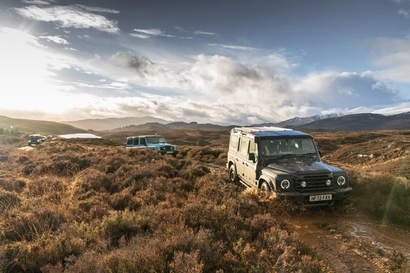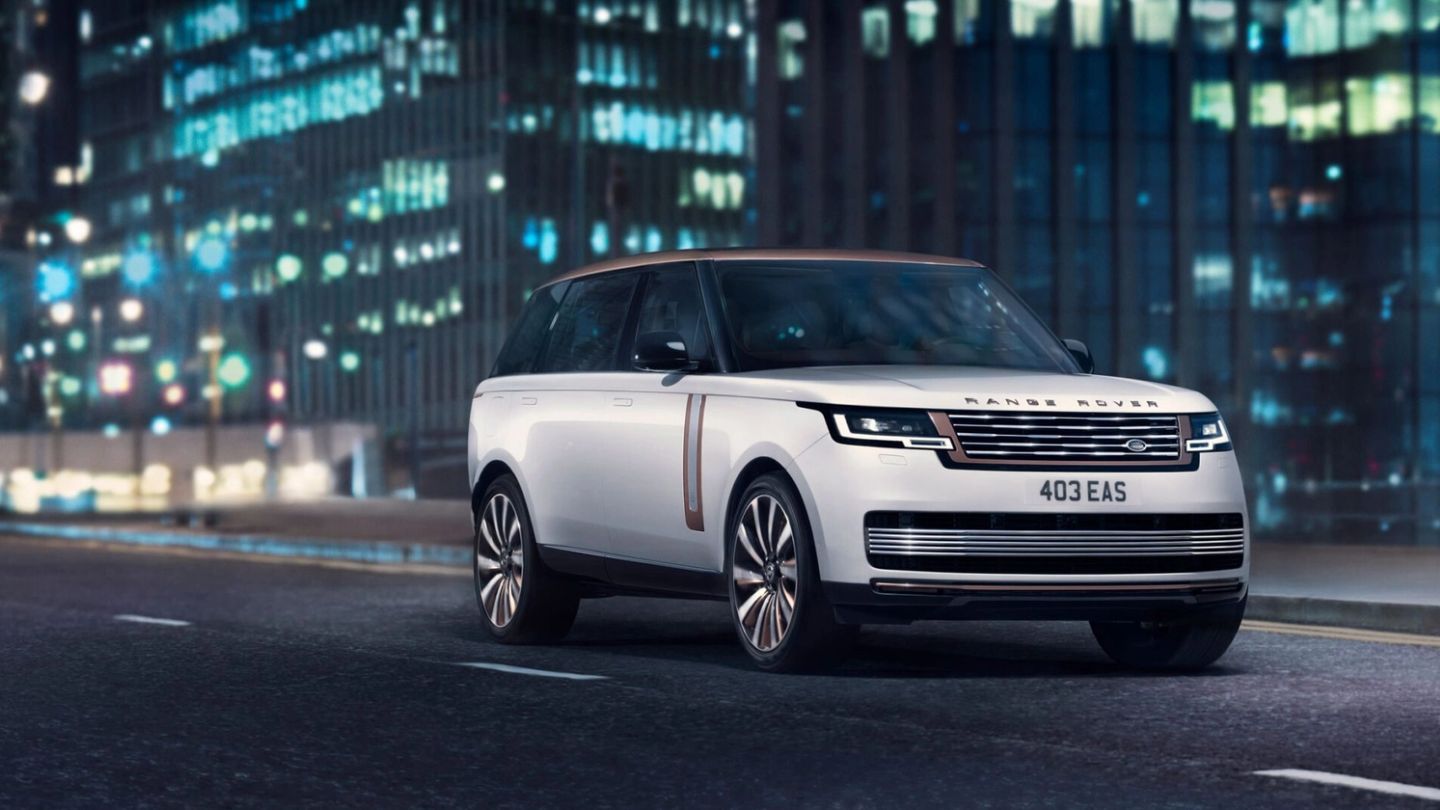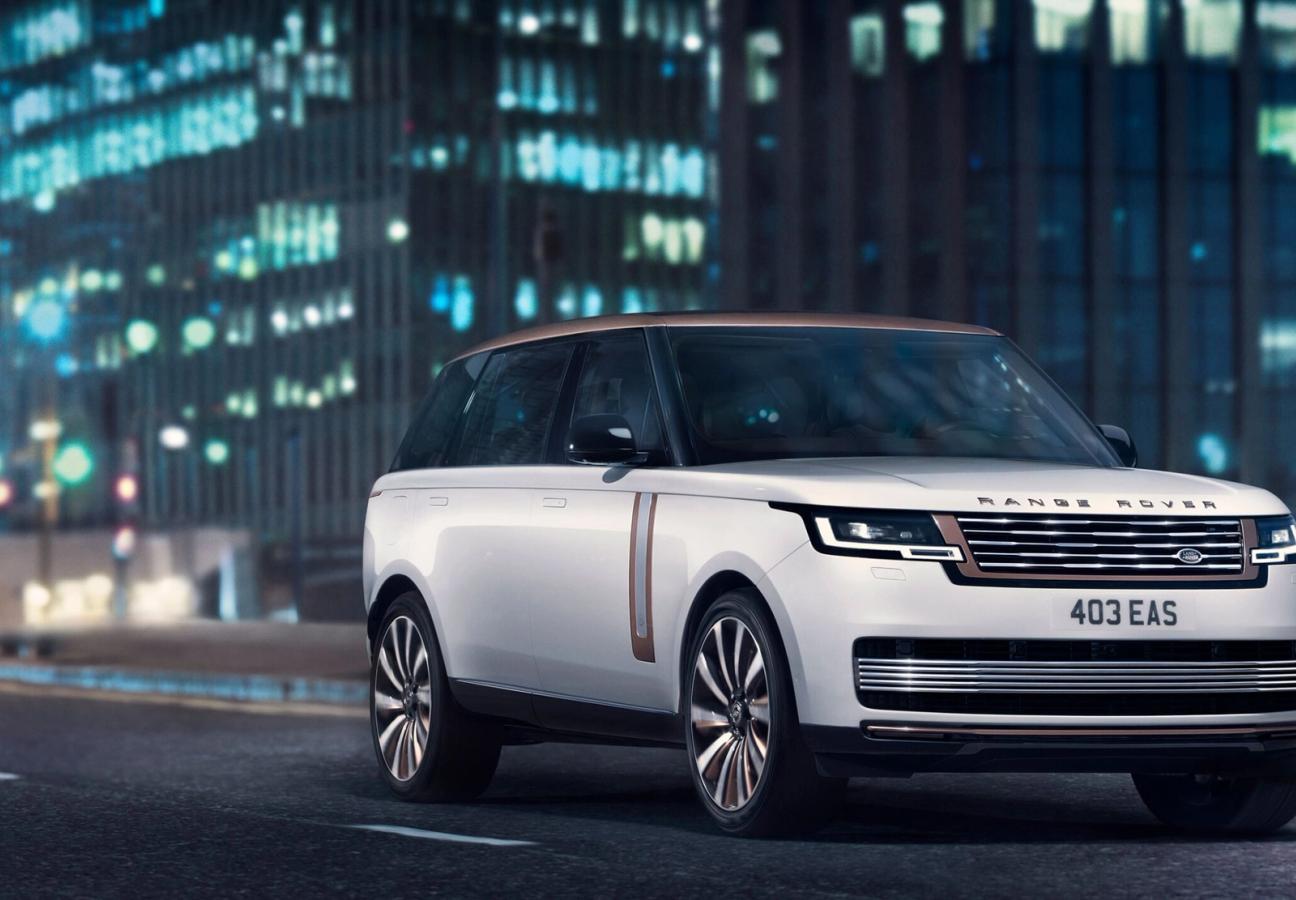

Fifth time’s the charm! It’s not a common saying — but it should be. Because occasionally it takes those few extra bids and bashes to get something just right. Take the Fifth Amendment, for example. That’s proved pretty important. Or Beethoven’s Fifth; an iconic, symphonic cornerstone of classical music. Even in driving, it’s only when you shift into fifth gear that things really start to get moving.
Speaking of which, what do you think of the fifth generation Range Rover? Last month, the great-great-grandson of the original model was unveiled; itself the patriarch of the premium SUV world. It’s set to enter production next year, and features an overhauled suspension system, a 523-horsepower twin-turbo V8, hybrid electric options and an excitingly revised, refined design. In fact, the brand filed no fewer than 125 patents during the development of this latest luxury model.
And yet, despite these considerable tweaks and tucks, this is still identifiably, indisputably a Range Rover. But that’s a good thing. As we said, the marque is an elder of the sector — a four-wheeled father figure to Velar and Evoque alike. Much like Gerry McGovern, the man who has been at the wheel of Land Rover’s Design Studio for almost two decades and, last year, was awarded an OBE for his services to automotive design.
His laudable skills are on full show here. The fifth generation Range Rover is defined by three distinct, dynamic lines: a falling roofline; a strong waistline; and a rising sill line. This singular silhouette, a hallmark of the Range Rover sub-brand, ensures that the latest model retains the visual style of its predecessors — albeit with some choice upgrades. So how did McGovern give new, modern life to the iconic design?
“The challenge for this vehicle,” explains the design director, “was not to change the car or redesign the car — but to simply make it better. And that’s exactly what we did. The Range Rover is such an iconic vehicle that, when the time came to step into a new chapter, we wanted to ensure we maintained the emotional connection that people have had with this car since the first of its kind in 1970.
“It doesn’t follow fashion or trend,” McGovern adds. “But rather combines a modernist design philosophy with over 50 years of evolution.”
That clamshell bonnet, for example, has been a feature of every Range Rover since the first generation was launched over half a century ago. But, for the new model, the size of its shut line has been halved, and is virtually undetectable. This, McGovern says, shows an increased level of control and precision in the new design — a change made whilst maintaining the DNA of the original design.

“Everything is so pure and free from any superfluous ornament,” says McGovern. “As a design team, we worked alongside engineering to create something that is clean, reductive, free from over-augmentation and excessive lines or detail.
“The design employs restraint,” he continues, “but is not clinical or cold. Instead, it is warm, sophisticated and forward-thinking. It has been carefully considered and refined, literally, to the millimetre — from the proportions to all the sophisticated surfaces, and from flush details like glazing, side-vents and the hidden waist finished to the hidden-until-lit technology of the tail lamps.”
Those tail lamps are perhaps the most striking element of the new Range Rover. A major talking point among both industry professionals and casual critics, there’s a certain beauty in the simplicity of the design. The lights form a three-sided, squared-off loop that encircles the split tailgate, and work to establish a new visual calling card for Range Rover.
"It has been refined, literally, to the millimetre..."
“The rear incorporates all of the elements in our modernist history with a single, crisp feature line,” says McGovern. “It both catches the light and describes the corners of the vehicle, and is defined by vertical taillights, which are encased in a single gloss black panel that runs the whole length of the rear.
“The hidden-until-lit technology,” the designer continues, “integrates other functional lights and defines the width of the vehicle. Precision was critical here, for the success of the design and the way the rear lights are integrated. But it will become a Range Rover signature.”
It’s a similar story at the front end of the car. The grille has been artfully redesigned, and bows down slightly between the headlights. The lights themselves are digital LEDs, which sit safely behind ‘cut-glass effect’ lenses that McGovern wanted to have “a jewel-like quality”.
It’s an elegant effect; and one typical of the new Range Rover’s distinctly luxurious feel. But were these touches a response to the fast-accelerating competition in the premium SUV market — or rather to individual customers’ desire for higher-end detailing?
“Range Rover lives in a world of luxury,” says McGovern. “One that has changed dramatically from when the original Range Rover started in 1970. And we are now living in a world where sustainability, longevity and sophistication are becoming more important”.
It’s not all about luxury, then. Rather, the latest Range Rover also offers answers to consumers’ calls for quality, craftsmanship and environmental consideration. And, while the first of the fifth generation models may not be leading the charge in the EV game, 2024 will see the first battery-electric Range Rover roll onto our roads, as part of the British brand’s ‘Reimagine’ strategy.
For now, plug-in hybrid models will deliver a hushed EV range of up to 100km (62 miles) and drastically reduced CO2 emissions. And the sustainable streak continues inside the spacious cabin.

“Our uncompromised vision of innovation in materials, processes and technologies promote social, environmental and economical values,” says the design director. “And they are in-line with changing customer values. We have developed curated interior options for the New Range Rover that are more sustainable, more responsible and more progressive”.
For example, the new Range Rover will offer a leather-free interior — delivering on one of the key targets laid out in the brand’s eco-friendly business plan. It’s seemingly a skin-deep change. But, like the revamped rear lights and the sleeker shut lines, it subtly signals a more intrinsic change in the approach to Range Rover design. And, where Range Rover goes, the wider premium SUV market invariably follows.
“In this way,” says McGovern, “we’re helping to set the tastes of our time. And not just in the automotive world, but beyond…”
Official Fuel Consumption Figures for the New Range Rover in mpg (I/100km): Combined 23.5-37.2 (12-7.6). CO2 Emissions 272-198 g/km. The figures provided are as a result of official manufacturer’s tests in accordance with EU legislation. For comparison purposes only. Real world figures may differ. CO2, fuel economy, energy consumption and range figures may vary according to factors such as driving styles, environmental conditions, load, wheel fitment and accessories fitted.
Want to learn more about the new car? Here are 9 things you need to know about the reinvented model…
Become a Gentleman’s Journal member. Find out more here.



